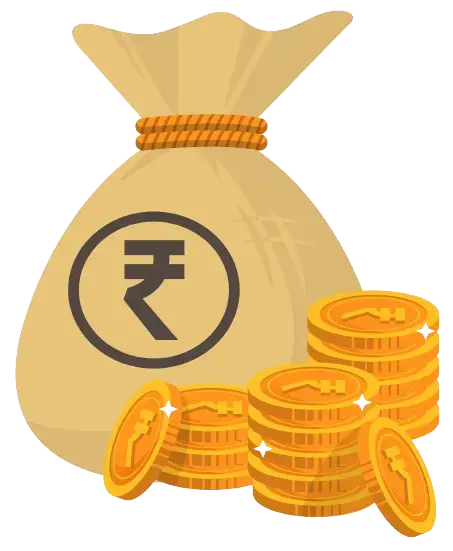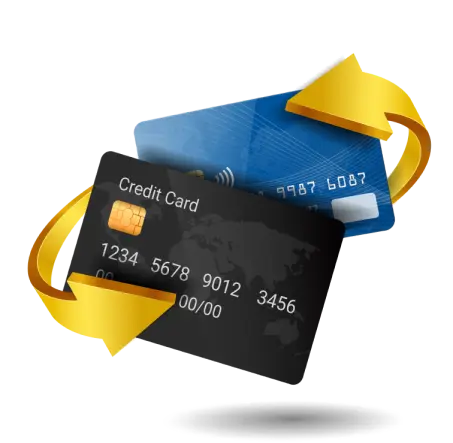In India, debit cards are linked to savings or current accounts which allows users to make secure payments and access funds directly.
The types of debit cards include Rupay, Visa, Maestro, and Mastercard, are globally accepted and provide rewards or cashback. RuPay cards, developed by the NPCI, are tailored for domestic use with lower transaction costs and offers accidental insurance.
Contactless debit cards use NFC technology for quick payments. The debit card fees vary by bank and card type. Common benefits include convenience, safety, rewards, and smooth online payments.
Read on to learn the various aspects of debit cards!
Debit cards in India offer easy and secure access to your bank funds, with added perks based on the card type—like global acceptance (Visa, Mastercard), domestic savings (RuPay), or quick tap-and-go payments (contactless cards).
Table of Contents:
Best Debit Cards and Features
These days there are plenty of options available when it comes to ATM cards. Several banks provide debit cards with unique features to enhance lifestyle quality and banking experience.
Given the 4 types of debit cards, here are some of the best debit cards of 2025 and its features:
- HDFC Debit Card: It provides a range of cards with cashback, high transaction limits, and digital control features for everyday and premium spending.
- Earn 1% cashback on categories like fuel, apparel, insurance, education, and grocery.
- Shopping limit up to ₹3.5 lakh and ATM withdrawal limit up to ₹50,000.
- ICICI Debit Card: This card is designed for global use with rewards, EMI options, and lifestyle benefits like dining and entertainment offers.
- No joining fee or annual fee.
- Reward points on every purchase (except fuel).
- Discount offers on dining, movies, and more.
- Axis Bank Debit Card: This card combines reward points with lifestyle perks such as Times Prime membership and dining discounts.
- 1000 Axis Edge Reward Points on card activation.
- 25% discount offer on movie tickets via BookMyShow.
- ₹800 off on Axis Bank Dining Delights program.
- No joining fees or annual fees.
- SBI Debit Card: Provides wide ATM access, global usability, and benefits like reward points and complimentary lounge access.
- Complimentary airport lounge access.
- 10,000 SBI Reward Points every month with a cap of ₹1000 per transaction.
- 300 Bonus Reward Points on first 3 payments.
- 2x Reward Points on purchases made during birthday month.
- 2 Reward Points on every ₹200 spent.
- BOB Debit Card: It offers a diverse range of debit cards to meet various customer needs, from everyday transactions to premium lifestyle benefits.
- Combines benefits of debit card and prepaid card.
- Complimentary Airport Pickup and Drop Service.
- Complimentary Domestic Airport Lounge Access.
- Combines benefits of debit card and prepaid card.
- Suitable for all payment applications.
Amongst the various HDFC Debit Cards, the HDFC Bank Millennia Debit Card is the most popular due to its features such as:
The ICICI Platinum Chip Debit Card is one of the best debit cards of ICICI as of 2025. Here are its key features:
The Priority Debit Card is one of the top debit cards by Axis bank and includes the following features:
The SBI Platinum International Debit Card - one of the leading SBI debit cards comes with features such as:
The RuPay Qsparc NCMC Debit Card is listed among the best debit cards by Bank of Baroda and includes the following features:
Are you looking for a personal loan?
Debit Card Limits and Charges
As of May 1, 2025, the Reserve Bank of India (RBI) has updated the guidelines on debit card usage, focusing on transaction limits and associated charges.
Here’s what you need to know:
- ATM Withdrawal Limits: These limits vary based on the bank and the specific debit card variant.
- Point of Sale (PoS) and Online Transactions: The transaction limits for PoS and online purchases are determined by individual banks and can vary based on the card type.
- Contactless Payments: For contactless transactions, the RBI permits payments up to ₹5,000 per transaction without requiring a PIN.
For instance, HDFC Bank's Platinum Chip Debit Card allows daily ATM withdrawals up to ₹1,00,000, while SBI's Platinum International Debit Card offers similar limits.
ATM Withdrawal Charges
Customers are entitled to 5 free transactions (inclusive of financial and non-financial) at their card’s bank ATMs per month.
For other bank ATMs,
- Metro Cities: 3 free transactions per month.
- Non-Metro Cities: 5 free transactions per month.
Note that after the free transaction limit, a fee of ₹23 per transaction is applicable.
International ATM withdrawal charges vary by bank. For example, HDFC Bank levies a fee of ₹125 plus applicable taxes, while ICICI Bank charges a minimum of ₹150.
Check the best offers & apply for a credit card!
Contactless Debit Card and Benefits
A contactless debit card allows you to make payments just by tapping it on a machine, without swiping, inserting, or entering a PIN—up to a limit of ₹5,000, as allowed by RBI rules.
It uses NFC (Near Field Communication) technology to make transactions quick and easy. Hence it enables faster and more seamless transactions compared to traditional debit cards.
Here are some of the key benefits of contactless debit cards:
- Faster transactions at retail outlets.
- Secure payments through dynamic encryption.
- Reduced physical contact, enhancing hygiene and convenience.
- No PIN required for small-value transactions (within RBI-prescribed limit).
- Accepted at all NFC-enabled terminals in India and abroad.
Not sure of your credit score? Check it out for free now!
- SBI Personal Loan
- HDFC Personal Loan
- Axis Personal Loan
- Bank of Baroda Personal Loan
- PNB Personal Loan
- Canara Bank Personal Loan
- ICICI Bank Personal Loan
- IDFC First Bank Personal Loan
- Indian Overseas Bank Personal Loan
- IDBI Bank Personal Loan
- Citi Bank Personal Loan
- Bank of India Personal Loan
- Federal Bank Personal Loan
- UCO Bank Personal Loan
- Union Bank of India Personal Loan
- Yes Bank Personal Loan
- Central Bank of India Personal Loan
- Induslnd Bank Ltd Personal Loan
- Indian Bank Personal Loan
- RBL Bank Personal Loan
- Bandhan Bank Personal Loan
- J&K Bank Personal Loan
- Karnataka Bank Personal Loan
- Karur Vysya Bank Personal Loan
- South Indian Bank Personal Loan
- HSBC Bank Personal Loan
- Bank of Maharashtra Personal Loan
- Punjab and Sind Bank Personal Loan
- Dhanlakshmi Bank Loan
- Ujjivan Small Finance Bank Personal Loan
- SBI Personal Loan for Low Salary
- SBI Personal Loan ₹15000 Salary
- SBI Personal Loan ₹25000 Salary
- Paysense Personal Loan
- Fibe Personal Loan
- Incred Personal Loan
- Mpokket Personal Loan
- NIRA Personal Loan
- Prefr Personal Loan
- Cashe Personal Loan
- Loanbaba Personal Loan
- Pocketly Loan
- MoneyTap Personal Loan
- Zype Personal Loan
- TATA Capital Personal Loan
- Muthoot Finance Personal Loan
- Bajaj Finance Personal Loan
- Dhani Personal Loan
- L&T Finance Personal Loan
- Upwards Personal Loan
- LoanTap Personal Loan
- Phocket Personal Loan
- Faircent Personal Loan
- HDB Personal Loan
- Finnable Loan
- Aditya Birla Personal Loan
- IndiaLends Personal Loan
- IIFL Personal Loan
- Sriram Finance Personal Loan
- Stashfin Loan
- Reliance Personal Loan
- MyMoneyMantra Personal Loan
- Credy Loan
- Piramal Finance Personal Loan
- Poonawala Fincorp Personal Loan
- Flipkart Personal Loan
- Google Pay Loan
- Paytm Personal Loan
- Phonepe Loan
- Mobikwik Loan
- NBFC Personal Loan
- Rapid Rupee Personal Loan
- Rupeek Personal Loan
- Personal Loan For Salaried
- Personal Loan for Self Employed
- Personal Loan for Startups
- Personal Loan for Government Employees
- Personal Loan for Professionals
- Personal Loan For Women
- Personal Loan For Lawyers
- Personal Loan for Doctors
- Personal Loan for Students
- Personal Loan for Teachers
- Loans for Chartered Accountants
- Loan for Housewives
- Loans for Widows
- Loans for Taxi Drivers
- Loans for Graduates
- Personal Loan for Low Cibil Score
- Types of Personal Loan
- Emergency Loan
- Insta Loan
- Top Up Loan
- Long Term Personal Loans
- Short Term Personal Loans
- Personal Loan on Aadhaar Card
- Personal Loan Hyderabad
- Personal Loan in Mumbai
- Personal Loan in Bangalore
- Personal Loan in Erode
- Personal Loan in Chennai
- Personal Loan in Delhi
- Personal Loan in Kolkata
- Personal Loan in Pune
- Personal Loan in Lucknow
- Personal Loan in Ahmedabad
- Personal Loan in Chandigarh
- Personal Loan in Navi Mumbai
- Personal Loan in Bhopal
- Personal Loan in Jaipur
- Personal Loan in Trivandrum
- Personal Loan in Noida
- Personal Loan in Gurgaon
- Personal Loan in Vadodara
- Personal Loan in Rajkot
- Personal Loan in Agra
- Personal Loan in Mysore
- Personal Loan in Dehradun
- Personal Loan in Patna
- Personal Loan in Ludhiana
- Personal Loan in Ghaziabad
- Personal Loan in Goa
- Personal Loan in Kochi
- Personal Loan in Ernakulam
- Personal Loan in Calicut
- Personal Loan in Udaipur
- Personal Loan in Kanpur
- Personal Loan in Coimbatore
- Personal Loan in Guwahati
- Personal Loan in Varanasi
- Personal Loan in Bhubaneswar
- Personal Loan in Pondicherry
- Personal Loan in Mangalore
- Personal Loan in Vellore
- Personal Loan in Surat
- Personal Loan in Thrissur
- Personal Loan in Raipur
- Personal Loan in Trichy
- Personal Loan in Visakhapatnam
- Personal Loan in Nagpur
- Personal Loan in Indore
- Personal Loan in Nashik
- Personal Loan in Vijayawada
- Personal Loan in Amritsar
- Personal Loan in Thane
- Personal Loan in Jamshedpur
- ₹50000 Personal Loan
- ₹1 Lakh Personal Loan
- ₹3 Lakh Personal Loan
- ₹5 Lakh Personal Loan
- ₹10 Lakh Personal Loan
- 15 Lakhs Personal Loan
- 20 Lakhs Personal loan
- 30 Lakh Personal Loan
- 50 Lakhs Personal Loan
- ₹4000 Personal Loan
- ₹5000 Personal Loan
- ₹10000 Personal Loan
- ₹20000 Personal Loan
- ₹25000 Personal Loan
- ₹30000 Personal Loan
- ₹40000 Personal Loan
- SBI Personal Loan Customer Care Number
- HDFC Bank Personal Loan Customer Care Number
- ICICI Bank Personal Loan Customer Care Number
- Bank of Baroda Personal Loan Customer Care Number
- PNB Personal Loan Customer Care Number
- Axis Bank Personal Loan Customer Care Number
- Canara Bank Personal Loan Customer Care Number
- IndusInd Bank Personal Loan Customer Care Number
- IDFC Bank Personal Loan Customer Care Number
- Indian Bank Personal Loan Customer Care Number
- Union Bank Personal Loan Customer Care Number
- Yes Bank Personal Loan Customer Care Number
- Indian Overseas Bank Personal Loan Customer Care Number
- IDBI Bank Personal Loan Customer Care Number
- Bank of India Personal Loan Customer Care Number
- Central Bank of India Personal Loan Customer Care Number
- Federal Bank Personal Loan Customer Care Number
- Standard Chartered Personal Loan Customer Care Number
- UCO Bank Personal Loan Customer Care Number
- Bandhan Bank Personal Loan Customer Care Number
- RBL Bank Personal Loan Customer Care Number
- Small Business Loan
- Business Loans for Women
- Startup Business Loans
- Working Capital Loan
- Unsecured Business Loan
- Cash Credit Loan
- Commercial Loans
- Commercial Vehicle Loans
- Equipment Loans
- Medical Equipment Loan
- Construction Equipment Loan
- Equipment Leasing Loan
- Corporate Loan
- Collateral Free Loans
- Business Loan for Startup
- Types of Business Loan
- Loans for Restaurants
- Loans for Private Schools
- Loans for Defence Personnel
- Loans for Construction
- Loans for Commercial Shop Purchases
- Loans for Chartered Accountants
- Loans for Buying Land
- Loan for Beauty Parlour
- Loan for Warehouse
- Cold Storage Loan
- Dairy Farm Loan
- E-Commerce Loans
- Animal Husbandry Loan
- Loan for Medical Shop
- Loan for Dental Clinic
- SBI business loan
- HDFC Bank business loan
- Axis Bank business loan
- Bank of Baroda business loan
- PNB business loan
- Canara Bank business loan
- ICICI Bank business loan
- IDFC Bank business loan
- IOB business loan
- IDBI Bank business loan
- Bank of India business loan
- Federal Bank business loan
- UCO Bank business loan
- Union Bank business loan
- Yes Bank business loan
- Central Bank of India business loan
- IndusInd business loan
- Indian Bank business loan
- RBL Bank business loan
- Bandhan Bank business loan
- mCapital Business Loan
- Ambit Finvest Business Loan
- InCred Business Loan
- TATA Capital Business Loan
- Protium Business Loan
- IIFL Business Loan
- Aditya Birla Business Loan
- IndiaLends Business Loan
- InCred Business Loan
- Mahindra Finance Business Loan
- Indifi Business Loan
- NeoGrowth Business Loan
- Bajaj Finserv Business Loan
- HDB Business Loan
- UGRO Business Loan
- Hero FinCorp Business Loan
- Shriram Finance Business Loan
Frequently Asked Questions
According to the Reserve Bank of India (RBI), there is no specific maximum limit for debit card transactions, and it is based on individual banks as per their internal policies and risk assessments.
The most ideal debit card for you can be determined based on your lifestyle and spending habits. There is no one-size-fits-all approach.
If you enter your debit card PIN incorrectly 3 times, your card will be temporarily blocked for security reasons. This block typically lasts up to 24 hours, after which it may automatically lift. If not, you may need to contact your bank to unblock it.
The RuPay debit cards are promoted for domestic use with lower transaction costs, while Visa debit cards are accepted globally and offer value-added services. The best choice depends on whether you prioritize local savings or global usability.
A debit card typically includes the cardholder’s name, 16-digit card number, expiration date, CVV (Card Verification Value), and EMV chip for secure transactions. It is also linked to the user’s bank account for direct fund access.
Log in to your bank’s internet or mobile banking platform and go to the debit card tracking section, or use the tracking number provided via SMS on the courier’s website. You can also contact your bank’s customer service for assistance.
The CVV (Card Verification Value) is a 3-digit security code printed on the back of a debit card and is used to verify transactions and ensure the cardholder’s identity during online or phone purchases.
Usually, a debit card cannot be issued without a bank account, as it is linked to the account for transaction purposes. However, some banks offer prepaid cards that function similarly to debit cards without requiring a traditional bank account.
A contactless debit card allows users to make payments by simply tapping the card near a payment terminal, using Radio Frequency Identification (RFID) technology, without the need to insert or swipe the card. It enhances convenience and security for small transactions.
Display of trademarks, trade names, logos, and other subject matters of Intellectual Property displayed on this website belongs to their respective intellectual property owners & is not owned by Bvalue Services Pvt. Ltd. Display of such Intellectual Property and related product information does not imply Bvalue Services Pvt. Ltd company’s partnership with the owner of the Intellectual Property or proprietor of such products.
Please read the Terms & Conditions carefully as deemed & proceed at your own discretion.







 Rated 4.5 on Google Play
Rated 4.5 on Google Play 10M+ App Installs
10M+ App Installs 25M+ Applicants till date & growing
25M+ Applicants till date & growing 150K+ Daily Active Users
150K+ Daily Active Users
